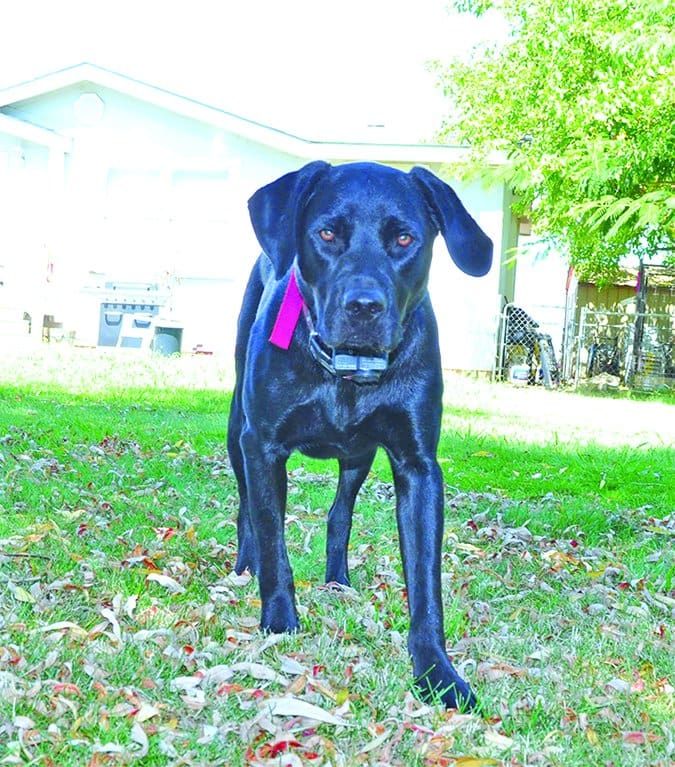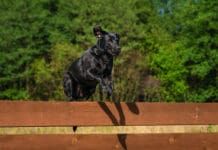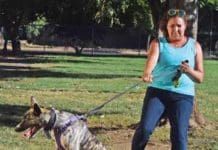The industry calls them underground containment systems. The public tends to call them by the most commonly known brand name – “Invisible Fence.” I unfailingly call it a “Stupid Underground Shock Fence” (SUSF). Because that’s what it is.
Sadly, SUSFs are popular for several reasons:
1. They are less expensive than a physical fence, easier and faster to install.
2. Many homeowners associations prohibit physical fences (don’t even get me started!) .
3. SUSF companies, other shock-collar companies, and trainers who use shock tools, have done a very good job of convincing many dog owners that these tools are effective and harmless, using deceptive terms such as “stim,” “tickle,” “e-touch,” and “electronic” to disguise the true nature of the shock. Incredibly, some even claim that they are using positive reinforcement when they use shock.
What Can Go Wrong with a Shock Collar?
SUSFs are, after all, legal to sell. They can’t possibly be that bad, can they? Yes, they can. Here are some of the bad things that can happen if you use a SUSF. I have seen the fallout firsthand and heard credible reports time and time again:
1. Some dogs become very aggressive, associating the shock with whatever was passing by at the time: another dog, a skateboarder, a child . . . I had a lovely Golden Retriever client who was ultimately euthanized as a dangerous dog because of this. Even after the SUSF representative came out and “retrained” her by putting a second shock collar around her groin to keep her in the yard, this previously aggression-free dog continued to run through the fence and attack dogs and humans passing by. Her aggression generalized to other non-fence situations, and her owners ultimately decided they could no longer trust her.
2. Some dogs are so traumatized by the shock that they are terrified to step foot into their own yards.
3. Some dogs are so traumatized by the warning beep associated with the shock that other, similar beeps – such as the beep of a camera, microwave oven, smoke alarm, electronic watch alarm – will send them into a total panic. I had a Greyhound client who was misdiagnosed with separation anxiety for this reason.
4. A SUSF doesn’t protect your dog from intruders (other dogs, humans) and hence puts her at risk from them (maybe an aggressive stray dog, a rabid fox who wanders into your yard, or a human with evil intentions), and puts innocent intruders at risk (a child, perhaps) especially if your dog has become aggressive due to the shock association.
5. Some dogs learn how to run through the fence. Some ignore the shock in a moment of high arousal over a passing dog, car, human, or other exciting stimulus. Some will deliberately accept the shock as the price they pay for their freedom. Still others learn to stand in the beep zone until the collar battery dies from the constant beeping and the dog crosses the fence line shock-free.
Positively Not Positive Training
Despite what those who market them might try to have you believe, there is nothing positive about an SUSF. Certainly they do work to keep many dogs contained in their yards, but at a high price. Shock is a very strong aversive. That’s not even open to debate. Even if you’re convinced you’d like to try one (shame!), you won’t know until it’s too late if your dog is one of the many who suffers one or more of the above-listed problems. The potential damage to a dog’s emotional health and physical safety should put these products in the “Never, Ever” category for any caring dog owner.







In my point of view, Using a shock collar help our little ones behave rightfully, it maybe a sort of punishment to them if they don’t follow some rules but at the end of the day it’s all for them. It’s like disciplining your own child, parenting sometimes need to be strong and tough but it’s love.
With the right guide and good trainer your dog will surely be awesome.
Sadly, we did not understand the risks of an invisible fence and had one installed. We were assured it would be set to the lowest setting for training. I was horrified when during training my dog yelped and then looked around in confusion and fear. Any time we put the collar on him, he would just lie down on our front step and refuse to venture into the yard. We quickly put it away and never used it again. We now have a physical fence.
Yeah with the invisible fence you just scare the dogs because they not prepared….
So what is the alternative? Our dog likes going on other people’s properties and get their stuff to chew on it. shoes, packages, lifejackets, you name it she gets it. How doe we break her of that?
We had one for a lab several years ago. We were very detailed and thorough with our training and it worked great. I hated the idea of our lab receiving a shock, but it was so much better than catching her running into the street. I watched her once come face to face with a rabbit in our yard. She chased it right up to the boundary and stopped dead in her tracks at the boundary line. She WOULD test it though and when the batteries would die in the collar, she knew that she could proceed and we’d find her wandering down the street 😆 That was rare, and overall it worked out great. Oh… the only other issue is that my next door neighbor would sometimes cut our line with his aerator.